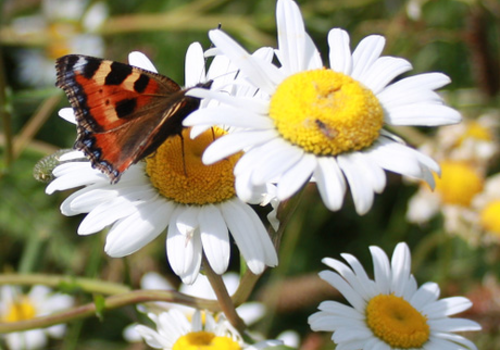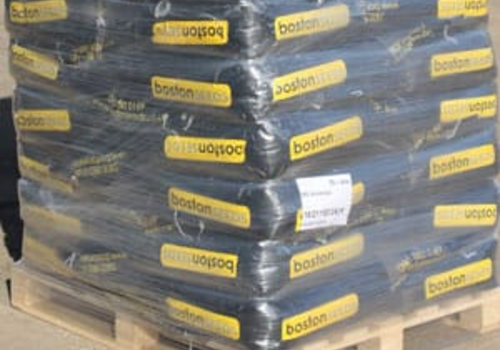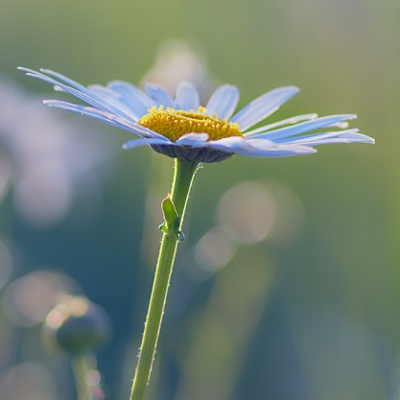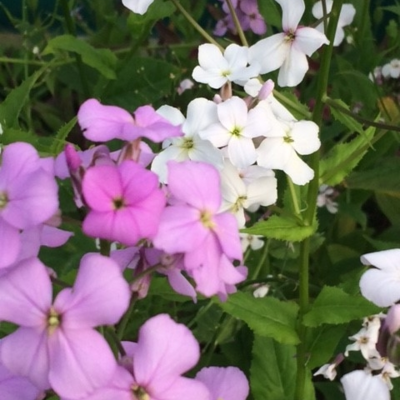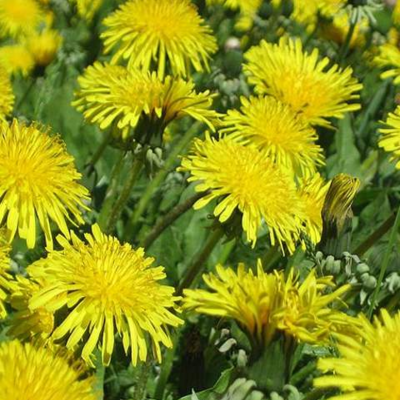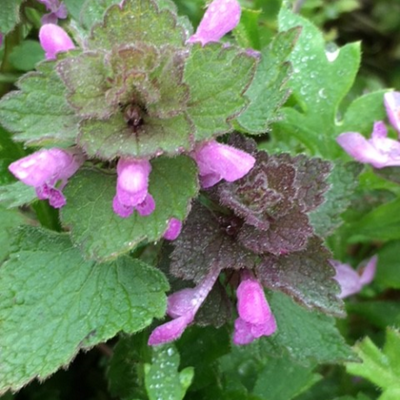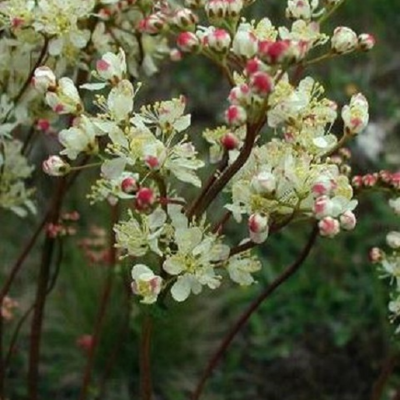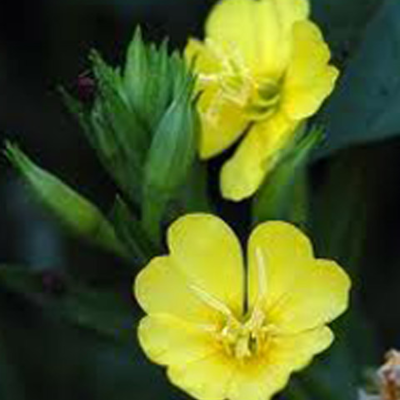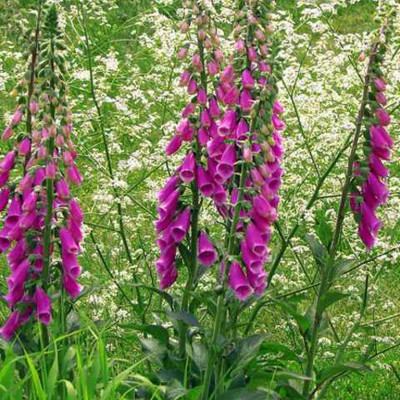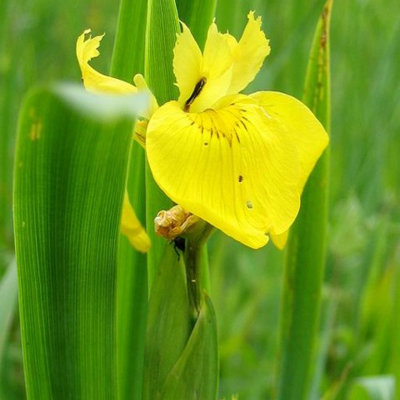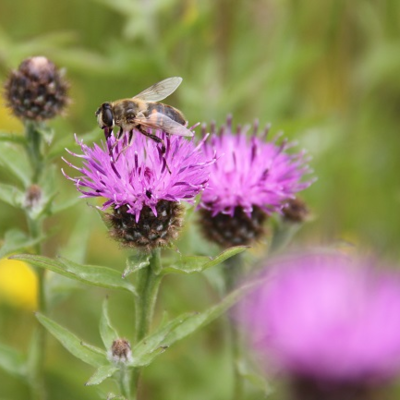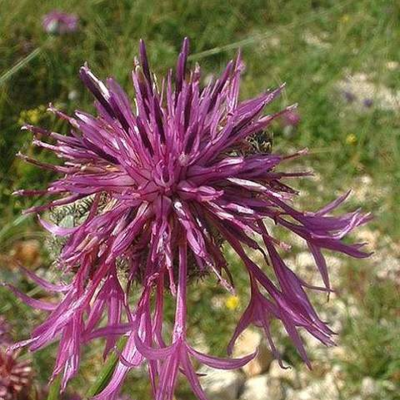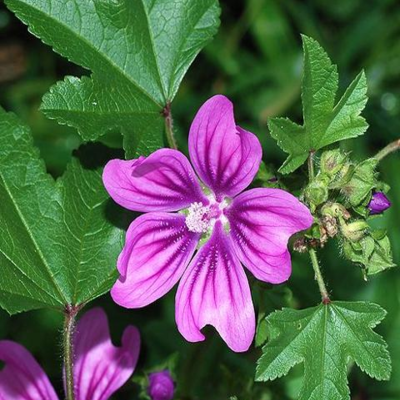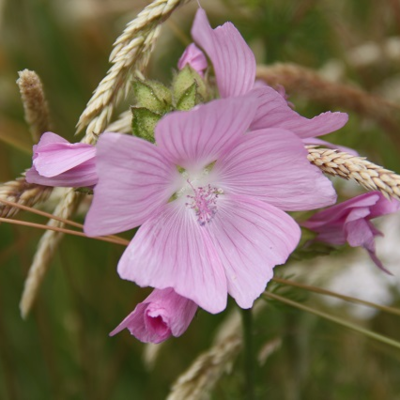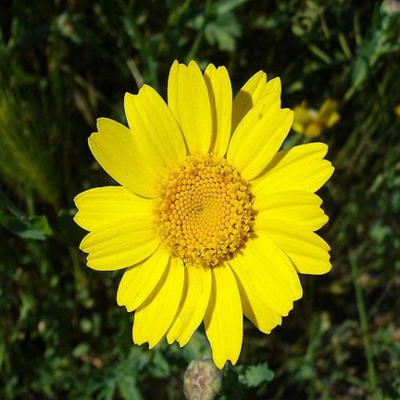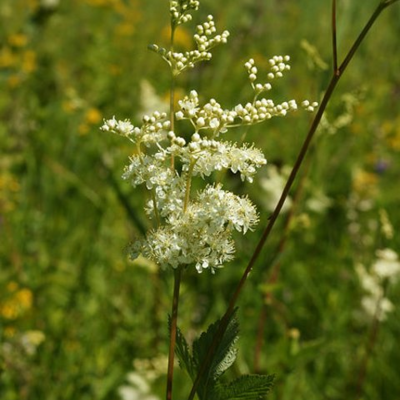Wildflower Seeds A to Z
From Agrimony right the way though to Yellow-rattle, there's a whole host of wildflower seeds you can choose from if a particular look is what you're going for. Each type of wildflower has its own unique set of qualities. Whether you're keen to create a meadow full of sunkissed golden wildflowers with healing properties like that of St John's-wort or you want a wildflower garden that looks pretty in pink when dressed in Greater Knapweed or Purple Loosestrife - we've got you covered.
Don't hesitate to get in touch to speak to one of our experts or request a catalogue to view our full range. Ordering regularly or looking for large volumes? Click here to apply for a trade account today - we review all applications within one working day.
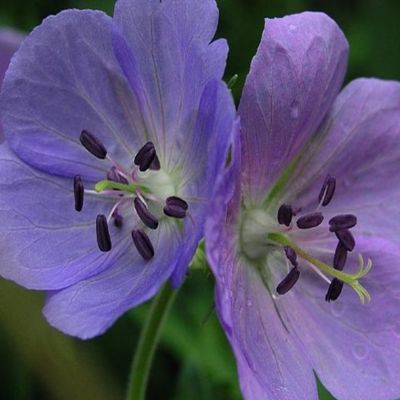

Plants for Pollinators highlights plants selected by the RHS as scientifically proven to tackle the declines in bees, butterflies and other pollinators.
The Meadow Cranesbill is a delightfully airy flower, with violet and blue flowers growing in pairs on tall, forked stems, as well as attractive, beak-like seed pods from which it gets its name. Well-loved by bees and other pollinators, and it’s very easy to naturalise!
- Type: Perennial
- Height: 60-100cm
- Flowers: June-September
- Best Sown: Spring
- Soil Requirement: Well-drained
- Light Requirement: Full sun and partial shade
- Natural Habitat: Meadows, road verges
- Also known as: Crowfoot, Meadow Geranium
- Seeds per gram: 120

Plants for Pollinators highlights plants selected by the RHS as scientifically proven to tackle the declines in bees, butterflies and other pollinators.
A well-known wildflower with numerous, narrow white petals and bright yellow florets making up its centre. It’s much larger than the typical lawn daisy: its flower heads grow around 3-5cm wide! A robust flower with classic charm, and a favourite of bees and butterflies.
- Type: Perennial
- Height: 30-60cm
- Flowers: May-August
- Best Sown: Autumn or Spring
- Soil Requirement: Well-drained
- Light Requirement: Full sun
- Natural Habitat: Meadows, road verges
- Also known as: Marguerite, Pretty Maids, Dog Daisy
- Seeds per gram: 3000
Light up woodland edges with Dames Violet, creating a smooth lilac, delicate flower. Excellent for naturalising, they can be found in woodland areas and borders to attract bees, butterflies and other pollinators with it's sweet scent.
- Type: Perennial
- Height: 60-90cm
- Flowers: May-August
- Best Sown: Autumn
- Soil requirement: Well-drained, moist
- Light requirement: Full sun and partial shade
- Natural habitat: Hedgerows, wood edges, wasteground
- Also known as: Damask, Queen's Gilliflower, Sweet Rocket
- Seeds per gram: 1,250

Plants for Pollinators highlights plants selected by the RHS as scientifically proven to tackle the declines in bees, butterflies and other pollinators.
One shouldn’t overlook the beaming yellow florets of the dandelion! Some treasure dandelions as a vitamin-rich food source, and they’re a hardy, easy-to-grow flower that’s sure to attract pollinators and bring an extra splash of sunshine to your garden. They’re named from the French word “dent-de-leon,” or “lion’s tooth,” referring to their deeply serrated leaves.
- Type: Perennial
- Height: 10-45cm
- Flowers: April-May
- Best Sown: Autumn or Spring
- Soil Requirement: Well-drained
- Light Requirement: Full sun and partial shade
- Natural Habitat: Meadows, road verges, fields
- Also known as: Bitterwort, Clock Flower, Lion’s Tooth
- Seeds per gram: 8000
The Deadnettle, despite its name, is a long-lasting, hardy and sprawling plant that can really bring a wild garden to life! Grows charming little whorls of pink and purple petals, as well as attractive red-tinted, heart-shaped foliage as it matures. Truly a hearty flower to get your garden buzzing with energy, especially as it's a favourite of bees and butterflies!
- Type: Perennial
- Height: 7-30cm
- Flowers: March-October
- Best Sown: Autumn or Spring
- Soil Requirement: Well-drained
- Light Requirement: Full sun
- Natural Habitat: Grasslands, hedgerows, road verges
- Also known as: Sweet Archangel, Bad Man’s Posies
- Seeds per gram: 1000

Plants for Pollinators highlights plants selected by the RHS as scientifically proven to tackle the declines in bees, butterflies and other pollinators.
The Dropwort produces long, thin branches of delicate pink buds and foamy cream flowers and thin, fern-like leaves. Everything about this plant appears as soft and sweet as its common nickname, ‘Meadowsweet’, and it has a strong scent to match. Plant it alone or with pastel-petalled company in heavier, loamy soil for a supremely sugary spectacle.
- Type: Perennial
- Height: 60-90cm
- Flowers: May-August
- Best Sown: Autumn or Spring
- Soil Requirement: Well-drained, moist
- Light Requirement: Full sun and partial shade
- Natural Habitat: Woodland verges, roadside verges, damp meadows
- Also known as: Lady’s Belt, Little Queen, Meadowsweet
- Seeds per gram: 850
The Evening Primrose’s fragrant bell-shaped flowers are welcome in any garden, and grow in shades of yellow, pink and white on tall stems. They’re easy to grow in any soil for those who want a beautiful bloom to light up the summer evenings.
- Type: Biennial
- Height: 100-150cm
- Flowers: June-October
- Best Sown: Spring
- Soil Requirement: Well-drained, sandy
- Light Requirement: Full sun and partial shade
- Natural Habitat: Roadside verges, meadows
- Also known as: Cure-All, Four O’Clock, German Rambion
- Seeds per gram: 2250
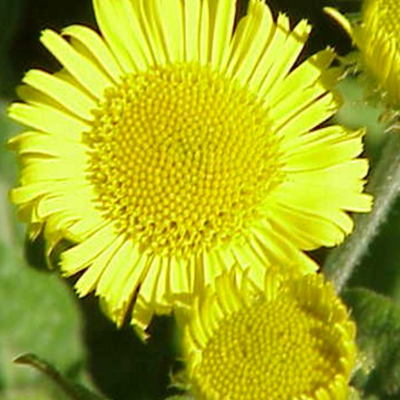

Plants for Pollinators highlights plants selected by the RHS as scientifically proven to tackle the declines in bees, butterflies and other pollinators.
Produces branched stems with daisy-like flowers in sunny shades of yellow. As its name suggests, its curious scents helps to repel unwanted insects. It prefers damper environments, making them perfect pond-side plants.
- Type: Perennial
- Height: 30-60cm
- Flowers: July-September
- Best Sown: Autumn or Spring
- Soil Requirement: Moist
- Light Requirement: Full sun and partial shade
- Natural Habitat: Riversides, marshes, ditches
- Also known as: Harvest Flower, Job’s Tears, Pig-Daisy
- Seeds per gram: 16000
This item is currently unavailable
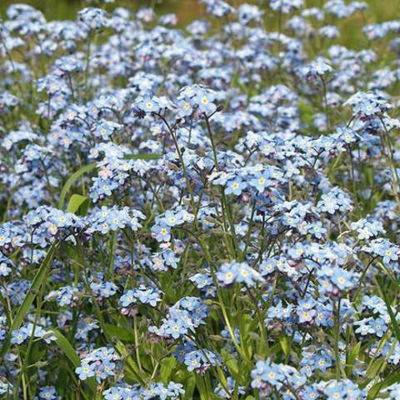

Plants for Pollinators highlights plants selected by the RHS as scientifically proven to tackle the declines in bees, butterflies and other pollinators.
There is something strangely unforgettable about this flower’s simple-but-unique tiny, baby-blue blooms with rare bursts of pink, and silvery foliage. They’re also perfect for pollinators, and have a knack for self-seeding.
- Type: Annual
- Height: 7-25cm
- Flowers: April-October
- Best Sown: Autumn
- Soil Requirement: Well-drained
- Light Requirement: Full sun
- Natural Habitat: Road-sides, dry grasslands
- Also known as: Blue Mouse-Ear, Scorpion Grass
- Seeds per gram: 4000

Plants for Pollinators highlights plants selected by the RHS as scientifically proven to tackle the declines in bees, butterflies and other pollinators.
This biennial wildflower flowers throughout the summer. A well-known stately plant with pink-purple flowers with spotting on the inside. This wildflower has tall spikes which can house up to 80 bell-shaped flowers. A desirable plant for pollinating species.
- Type: Biennial
- Height: 50-100cm
- Flowers: June-August
- Best Sown: Spring
- Soil Requirement: Well-drained
- Light Requirement: Full sun and partial shade
- Natural Habitat: Woodland edges, roadside verges, heathland, hedgerows
- Also known as: Goblin Gloves, Witches' Gloves, Dead Men's Bells
- Seeds per gram: 12000
This item is currently unavailable
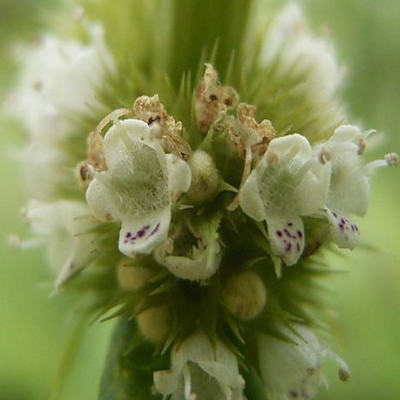

Plants for Pollinators highlights plants selected by the RHS as scientifically proven to tackle the declines in bees, butterflies and other pollinators.
A wetland plant with densely-packed miniature white flowers, dotted with red. Growing tall with distinct toothy leaves, it’s an excellent pond plant that also attracts pollinators.
- Type: Perennial
- Height: 50-100cm
- Flowers: July-September
- Best Sown: Autumn or Spring
- Soil Requirement: Moist
- Light Requirement: Full sun and partial shade
- Natural Habitat: River banks, stream sides
- Also known as: Bugleweed
- Seeds per gram: 4000
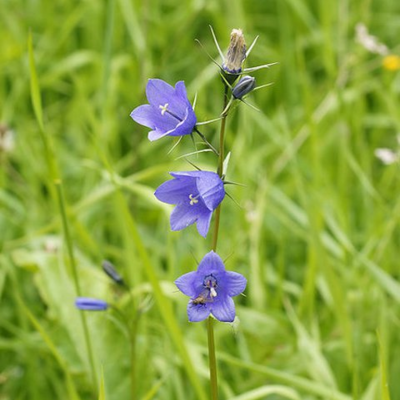

Plants for Pollinators highlights plants selected by the RHS as scientifically proven to tackle the declines in bees, butterflies and other pollinators.
A perennial wildflower that is commonly known in scotland as the Bluebell. The flowers usually have around 5 violet petals with a paper-like texture that are sealed together in a bell shape. The stem is thin and covered in tiny hairs.
- Type: Perennial
- Height: 15-45cm
- Flowers: July-September
- Best Sown: Spring
- Soil Requirement: Well-drained
- Light Requirement: Full sun
- Natural Habitat: Grassland, moors, meadows, sand dunes, cliffs
- Also known as: Bellflower, Lady's Thimble, Witch's Thimble
- Seeds per gram: 15000
This item is currently unavailable
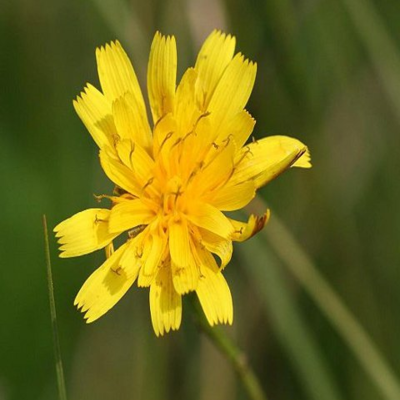

Plants for Pollinators highlights plants selected by the RHS as scientifically proven to tackle the declines in bees, butterflies and other pollinators.
For those with wildflower gardens, the dandelion-like, bright bursting yellow rosettes of the Autumn Hawkbit are a good way to bring in some extra sunshine. A long-lived and hardy wetland plant beloved by bees, and its seeds are also attractive to finches!
- Type: Perennial
- Height: 15-50cm
- Flowers: July-September
- Best Sown: Autumn or Spring
- Soil Requirement: Moist
- Light Requirement: Full sun and partial shade
- Natural Habitat: Grasslands, rocky ridges, pathways.
- Also known as: Fall Dandelion
- Seeds per gram: 1000
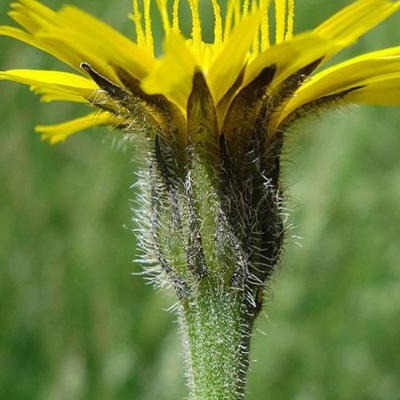

Plants for Pollinators highlights plants selected by the RHS as scientifically proven to tackle the declines in bees, butterflies and other pollinators.
The Rough Hawkbit’s sunburst-styled yellow florets are similar to that of the dandelion, but are distinguished by their larger heads with shades of red and orange on the outer florets, as well as coarse hair on the stem and leaves. A wildflower with a lot of warmth, and a lot of fragrance which helps to attract pollinators!
- Type: Perennial
- Height: 15-50cm
- Flowers: June-October
- Best Sown: Autumn
- Soil Requirement: Well-drained, sandy
- Light Requirement: Full sun
- Natural Habitat: Grasslands, rocky ridges, pathways.
- Also known as: Greater Hawkbit
- Seeds per gram: 900
This tall-growing iris really does show its beauty off like a flag in the wind! Thin, branching stems make way for buttery yellow, three-petalled flowers and blade-like leaves. A perfect pond-side plant that’s quite water-tolerant, thought by some to be the original fleur-de-lis, a symbol of heraldry and royalty.
- Type: Perennial
- Height: 100-150cm
- Flowers: May-August
- Best Sown: Autumn or Spring
- Soil Requirement: Moist
- Light Requirement: Full sun and partial shade
- Natural Habitat: Marsh, flood planes, ditches
- Also known as: Flagon, Water Flag, Yellow Fleur-De-Lis
- Seeds per gram: 20

Plants for Pollinators highlights plants selected by the RHS as scientifically proven to tackle the declines in bees, butterflies and other pollinators.
Produces a deep maroon flower head crowned with thistle-like florets of pink and purple, with dashes of a deep reddish-black. Don’t let its prickly appearance fool you- it’s an exceptionally hardy plant, but it has a softer side as a favourite of butterflies and bees!
- Type: Perennial
- Height: 30-60cm
- Flowers: June-September
- Best Sown: Autumn or Spring
- Soil Requirement: Well-drained
- Light Requirement: Full sun and partial shade
- Natural Habitat: Grasslands, forest verges
- Also known as: Bell Weed, Hardhead, Tassel
- Seeds per gram: 500

Plants for Pollinators highlights plants selected by the RHS as scientifically proven to tackle the declines in bees, butterflies and other pollinators.
A sharp and showy-looking flower, blooming into starburst-shaped, thistle-like magenta florets. The Greater Knapweed is hardy and tall-growing- grow it alone to let its brambly beauty shine forth and attract plenty of butterflies, or contrast it with softer-shaped wildflowers, like the ox-eye daisy.
- Type: Perennial
- Height: 40-90cm
- Flowers: June-September
- Best Sown: Autumn or Spring
- Soil Requirement: Well-drained
- Light Requirement: Full sun and partial shade
- Natural Habitat: Grasslands, cliff-sides
- Also known as: Black Top
- Seeds per gram: 130
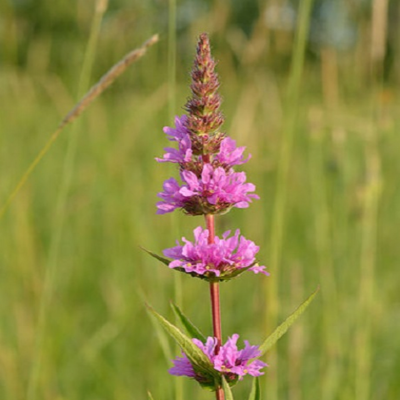

Plants for Pollinators highlights plants selected by the RHS as scientifically proven to tackle the declines in bees, butterflies and other pollinators.
Watch out! This chaotic-sounding, robust and hardy marsh flower may just flood your pond-side with plumes of pretty pink and purple petals, which just so happen to be perfect plants for pollinators.
- Type: Perennial
- Height: 60-120cm
- Flowers: June-September
- Best Sown: Spring
- Soil Requirement: Moist
- Light Requirement: Full sun and partial shade
- Natural Habitat: Marshes, riverbanks, fens
- Also known as: Black Blood, Rainbow Weed, Red Sally
- Seeds per gram: 13600
This item is currently unavailable
The mallow is a hearty plant in every sense of the word: it’s able to adapt to a variety of soils and seasons, and bears awfully lovey-dovey heart-shaped pink petals with darker veins. It’s also been prized for its numerous culinary and medicinal uses.
- Type: Annual or Biennial
- Height: 30-90cm
- Flowers: June-September
- Best Sown: Spring
- Soil Requirement: Well-drained, moist
- Light Requirement: Full sun
- Natural Habitat: Meadows, road verges
- Also known as: Cheese Cakes, Marsh Mallow, Round Dock
- Seeds per gram: 150

Plants for Pollinators highlights plants selected by the RHS as scientifically proven to tackle the declines in bees, butterflies and other pollinators.
The Musk Mallow has a lot of ties to love in mythology and the language of flowers- and with its precious pink, heart-shaped petals, it’s not hard to see why. It’s named for its strong, musky aroma which gets stronger in the warmth, making it beloved by bees- and, should you keep it indoors to amplify its scent, you’re sure to fall in love with it too!
- Type: Perennial
- Height: 30-90cm
- Flowers: July-September
- Best Sown: Autumn or Spring
- Soil Requirement: Well-drained
- Light Requirement: Full sun
- Natural Habitat: Hedgerows, meadows
- Also known as: Abelmosk, Ambrette
- Seeds per gram: 500

Plants for Pollinators highlights plants selected by the RHS as scientifically proven to tackle the declines in bees, butterflies and other pollinators.
An exceptionally hardy wildflower which produces golden, daisy-like blooms about 5cm in diameter. It’s also ideal for attracting bees and butterflies, and has been noted to have a pleasant scent.
- Type: Annual
- Height: 15-45cm
- Flowers: June-October
- Best Sown: Spring
- Soil Requirement: Well-drained
- Light Requirement: Full sun
- Natural Habitat: Hedgerows, meadows
- Also known as: Guild Weed, Yellow Daisy, Yellow Ox-Eye
- Seeds per gram: 750
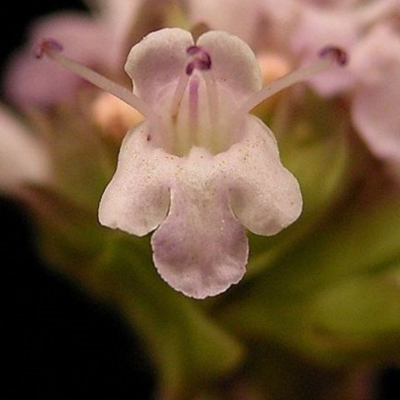

Plants for Pollinators highlights plants selected by the RHS as scientifically proven to tackle the declines in bees, butterflies and other pollinators.
An aromatic perennial with masses of dark purple buds that turn into paler flowers. The leaves are an oval shape and can be found in opposite pairs on the Squarish, red tinted stem. A very attractive pollinating plant.
- Type: Perennial
- Height: 30-60cm
- Flowers: July-September
- Best Sown: Spring
- Soil Requirement: Well-drained
- Light Requirement: Full sun
- Natural Habitat: Chalk limestone grassland. road verges, hedge banks
- Also known as: Cooking herb Oregano
- Seeds per gram: 10000
The Meadowsweet is well-named, as its cream-coloured, frothy flowers also have a particularly sweet scent, and is sometimes used as a flavouring. Preferring moist climates, this marsh flower is a tall-growing and hardy, and its sugary simplicity is sure to fit anyone’s tastes!
- Type: Perennial
- Height: 60-120cm
- Flowers: June-September
- Best Sown: Autumn or Spring
- Soil Requirement: Moist
- Light Requirement: Full sun and partial shade
- Natural Habitat: River banks, damp meadows
- Also known as: Bridewort, Honey-Sweet, Meadow Queen
- Seeds per gram: 1400
This item is currently unavailable
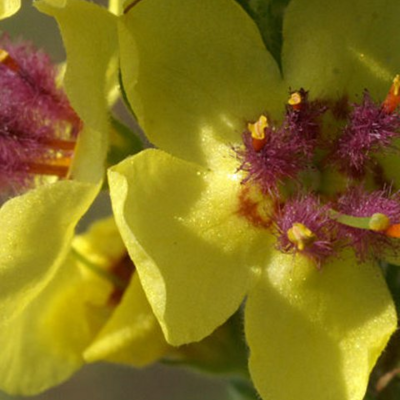

Plants for Pollinators highlights plants selected by the RHS as scientifically proven to tackle the declines in bees, butterflies and other pollinators.
The dark mullein is a flower with a lot of layers to its beauty, producing spikes of buttery yellow, five-petalled flowers that are rather cheery, but crowned with sophisticated wine-red stamens, all of it wreathed in hairy green foliage. A plant with a peculiar palette that’s sure to be striking in any arrangement.
- Type: Perennial
- Height: 15-45cm
- Flowers: June-September
- Best Sown: Autumn or Spring
- Soil Requirement: Well-drained
- Light Requirement: Full sun
- Natural Habitat: Road verges, hedgerows
- Also known as: Black-Rooted Mullein, Tall Mullein
- Seeds per gram: 11000
This item is currently unavailable
Maybe you're looking for something a little more unusual that's a firm favourite with the bees, in which case an ocean blue garden of Borage is what you need. Or what about the Devil's-bit Scabious? A funky looking plant that isn't half as hellish as it sounds.
All of the wildflower seeds we supply here at Boston Seeds are UK native and many of which are certified as Plants for Pollinators by the Royal Horticultural Society. So, not only will you have the most amazing wildflower garden, you'll being seriously doing your bit for the environment, too.
To learn more about each of the plant varieties we supply, check out our Guide to Wildflower Species here.
Choosing the Right Quantity of Wildflower Seed
Whether you're just looking for wildflower seed for a small patch or land or looking for large quantities for landscape projects we have a wide range of sizes. At Boston seeds you can buy our wildflower seed in multiple sizes including 50g, 100g, 250g, 1kg and 5kg.
Have a question about a particular wildflower? Check out our wildflower seed advice pages for more info.
Buy With Confidence

